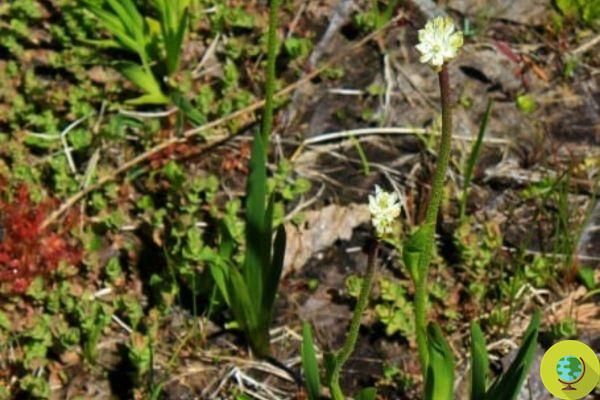
Botanists have discovered a new family of carnivorous plants in the North of the United States with unprecedented behavior
He is about to end up run over, his mother saves himBotanists from the University of Wisconsin – Madison have discovered a new family of carnivorous plants in the North of the United States with unprecedented behavior.
La Triantha occidentalis - this is the scientific name of the newly discovered plant species - it has been sighted in the swamps and marshes ranging from Alaska to California, up to the interior regions of Montana. During the summer, it brings out tall stems covered in sticky fuzz that trap small insects, such as midges: Scientists have found that the plant absorbs more than half of its nitrogen needs by digesting these small animals - consider that habitat it is quite low in nutrients.
Triantha represents the twelfth independent evolution in the carnivorous plant kingdom, and for the first time the feature was discovered within the order of the Alismatals - a group of mostly aquatic angiosperm plants. It is also the fourth confirmed case of a carnivorous plant in monocotyledons, the most common angiosperms.
What makes this carnivorous plant particularly interesting is the fact that it traps insects next to pollinated flowers - he explains. Qianshi Lin, author of the study. - On the surface, this looks like a conflict between the carnivorous plant and the pollination process, because it is counterproductive to kill the insects that help the plant reproduce. However, the plant seems to be able to distinguish pollinating insects from those that represent the source of nourishment, thanks to not very sticky glandular hairs, which trap only gnats and other very small insects and which leave free bees and butterflies, responsible for the process of pollination.
A previous analysis conducted on this species had shown that Triantha has lost a gene that carnivorous plants usually lack. This, coupled with the ability to trap insects and the proximity of other carnivorous plants in the same environment, made the Triantha a worthy representative of the carnivorous plant kingdom.
It must be said, however, that even the habitat has led this plant to develop the ability to capture and digest small insects: contrary to what we tend to think, in fact, it is often not the scarcity of resources that makes a plant carnivorous (think, for example, of carnivorous plants that grow in the desert, where water and nutrients are a luxury). The Triantha lives in swampy environments, rich in water and light, however the soil does not provide essential elements for its survival (such as nitrogen and phosphorus) that the plant takes on by digesting insects.
Some species of the same plant (including the Triantha glutinosa present in Wisconsin) have sticky hairs to attract insects, others do not: for this reason, further studies have been started to see how much the 'carnivorous' characteristic has spread within the species. The fact that the Triantha's tendency to eat insects has long eluded scientists for so long (despite being a widely spread plant, especially near big cities) suggests that there are other 'hidden' carnivorous plants waiting to be detected. .
Follow us on Telegram | Instagram | Facebook | TikTok | Youtube
Fonte: PNAS / University of Wisconsin-Madison
We also recommend:
- Venus flytrap: how to grow the world's most spectacular carnivorous plant that rids you of insects
- Drosera, the carnivorous plant family that seems to have rained down from space (PHOTO)
- Plants have memory: they learn and remember all information


























